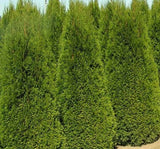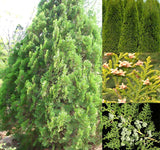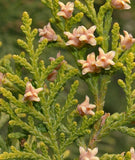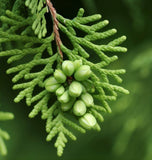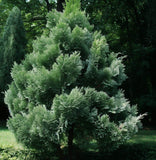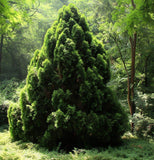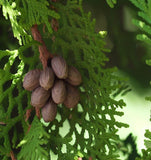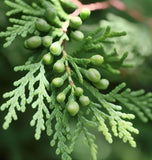Thuja orientalis (Oriental Arborvitae, Platycladus orientalis, Thuja acuta, Biota orientalis)
Thuja orientalis (Oriental Arborvitae, Platycladus orientalis, Thuja acuta, Biota orientalis) is a species of evergreen tree belonging to the cypress family (Cupressaceae). Here are some key details about this tree:
Description: Oriental Arborvitae is a medium-sized evergreen tree that typically reaches a height of 10 to 20 meters (33 to 66 feet) and has a pyramidal or conical shape. The foliage consists of scale-like leaves that are green to dark green in color. The tree's bark is reddish-brown and becomes fibrous and peeling with age.
Native Habitat: Oriental Arborvitae is native to eastern Asia, including regions like China, Korea, and Japan. It grows in a variety of habitats, such as mountainsides, forests, and cultivated areas.
Cultivation: Oriental Arborvitae is widely cultivated as an ornamental tree in gardens, parks, and landscapes due to its attractive shape and foliage. It is often used for hedges, screens, and as a specimen tree. Several cultivars with different growth habits and leaf colors are available in the horticultural trade.
Characteristics: The wood of Oriental Arborvitae is lightweight and has a fine texture. It is not commonly used for commercial purposes. The tree's branches have a fan-like arrangement, and the scale-like leaves create a dense, feathery foliage.
Environmental Role: Oriental Arborvitae provides habitat and cover for birds and small mammals. It can also help stabilize soil and prevent erosion with its dense root system.
Uses: In traditional medicine and herbal remedies, various parts of Oriental Arborvitae are used for their supposed therapeutic properties. The tree's essential oil is sometimes extracted and used in aromatherapy.
Conservation Status: Oriental Arborvitae is not currently considered a threatened species. However, like any tree species, it may face threats due to habitat loss and overexploitation. Conservation efforts and sustainable cultivation practices are essential for maintaining healthy populations.
Botanical Name : Thuja orientalis
Common Name : Oriental Arborvitae
Height : 50-70ft
Spread : 15-30 ft
Germination Info : Seed does not require a pre-treatment
Hardiness zone : 6-10
Average seed per ounce : Approx. 1200









